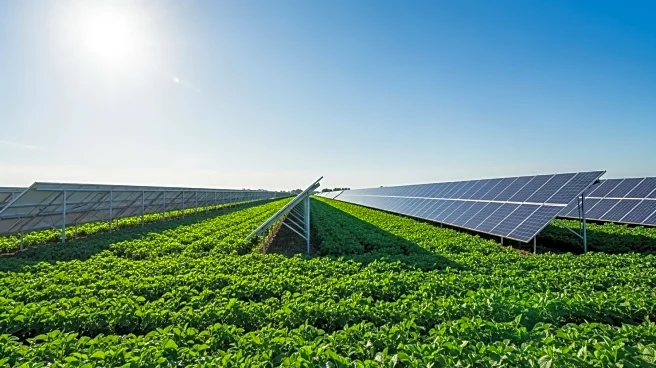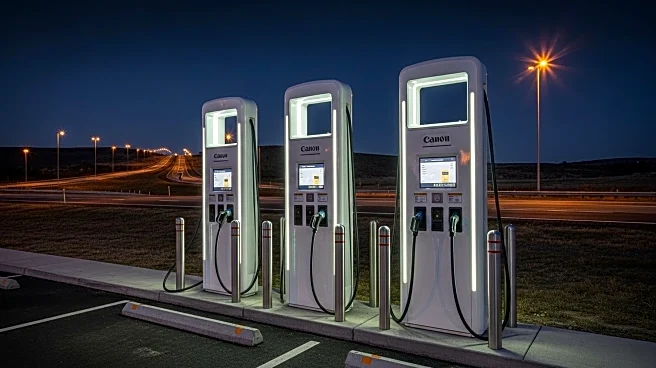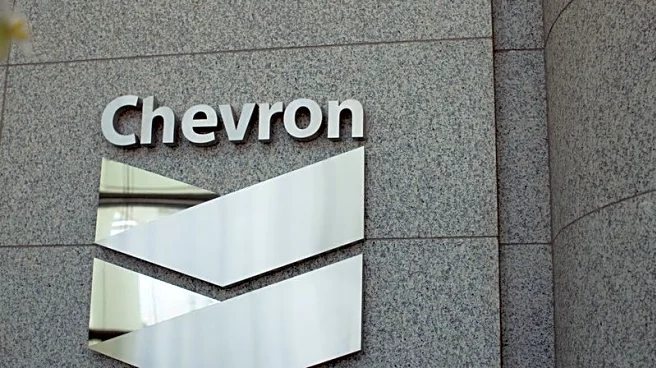What's Happening?
Huwa Enterprises, a land reclamation and engineering firm, is exploring the potential of agrivoltaics on cattle ranches. Agrivoltaics involves the integration of solar panels with agricultural activities, offering benefits such as improved yields and water savings. Brent Huwa, co-founder of Huwa Enterprises, has conducted tests showing that cattle can coexist with solar installations without damaging them. The company has already installed agrivoltaics at two cattle ranches in Louisiana, with development costs comparable to traditional solar projects. The initiative aims to leverage the shade provided by solar panels to enhance cattle feed efficiency and reduce water intake. Agrivoltaics is seen as a promising diversification strategy for farmers, especially in Colorado, where the arid climate makes it a suitable fit.
Why It's Important?
The exploration of agrivoltaics by Huwa Enterprises represents a significant shift in how agricultural land can be utilized to meet energy demands while supporting farming activities. This approach could help mitigate the decline in farmland acreage in the U.S., which has decreased by about 10 percent in the 21st century. By integrating solar panels with cattle ranching, farmers can potentially increase their financial security and contribute to clean energy production. The initiative also addresses concerns about losing agricultural land to solar projects, offering a multipurpose model that supports both energy and food production. As state policies and incentives continue to shape the future of agrivoltaics, this development could lead to broader adoption across the country.
What's Next?
The future of agrivoltaics in Colorado and beyond will likely depend on state policies and incentives. Colorado has offered cash grants for agrivoltaics, but the budget is smaller compared to other states like Washington. As more farmers and ranchers become aware of the benefits of agrivoltaics, there may be increased interest and investment in this approach. Utilities and electric co-ops may also need to adjust their evaluation criteria to better account for land stewardship within solar arrays. This could lead to more companies competing to develop innovative agrivoltaic systems that maximize land use for both energy and agriculture.
Beyond the Headlines
Agrivoltaics presents ethical and cultural dimensions by addressing the conflict between clean energy production and agricultural preservation. It offers a solution to the challenge of balancing energy needs with food security, potentially transforming rural economies and communities. The integration of solar panels with farming activities could lead to long-term shifts in land use practices, promoting sustainable agriculture and energy production. As the field of agrivoltaics continues to evolve, it may also influence cultural perceptions of farming and energy, highlighting the importance of multipurpose land use.













